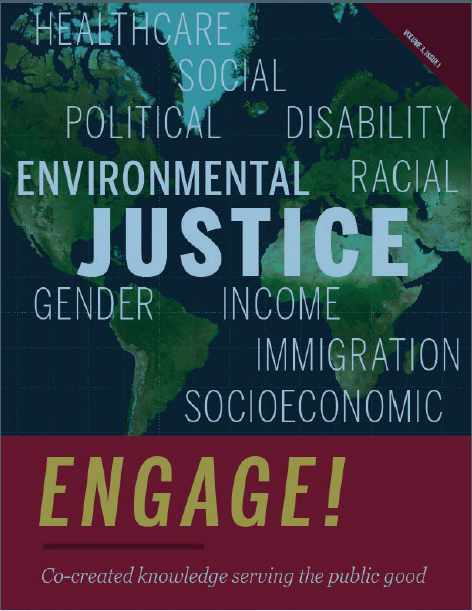Exploring University-Community Collaborations
DOI:
https://doi.org/10.18060/25724Abstract
The Riverside neighborhood bears multiple burdens of environmental harm. Running the gamut from groundwater contamination in subsurface waters to lead in soils and dust and paint to particulate matter in the air from highways and industry, these environmental insults harm the physical, mental, and economic well-being of the community. The community has also faced an information gap where data was scarce, hard to locate, and sometimes wrong. Activists have long worked to improve the quality of life in the neighborhood, but faced barriers in the form of policies (e.g. Red Lining, zoning variances, disinvestment in public services such as street lights and sidewalks) and practices (e.g. absentee landlords, illegal dumping). Features such as the Central Canal that were developed into recreational amenities in other parts of the city were minimally maintained or restricted from use by residents. In the face of these challenges, IUPUI faculty, students, and community members have partnered on multiple projects to document the history of environmental harms, assess exposure and risk of residents’ exposomes, and share information in ways that are accessible and relevant for residents. The work supports the agency and activism of the community, particularly as it faces pressures of gentrification and university encroachment with the prospect of 16 Tech project expansion. The work also takes place in the context of contested interests and harmful legacies as representatives of an urban university that displaced longtime residents work to partner ethically and transparently with those same communities. As a result, current faculty-community collaborations operate within a space complicated by the problematic legacy of harm and ongoing structural racism. However well-intentioned, faculty, students and community members have to navigate that history and enduring power dynamics as they design their research, identify relevant questions, and share results in ways that are accessible and meaningful to community members.
Downloads
Published
Issue
Section
License
Copyright (c) 2021 Elizabeth Kryder-Reid, Gabriel Fillipelli, Phyllis Boyd, Paula Brooks, Aghilah Nadaraj, Alvin Sangsuwangul, Leah Humphrey

This work is licensed under a Creative Commons Attribution-NonCommercial 4.0 International License.

